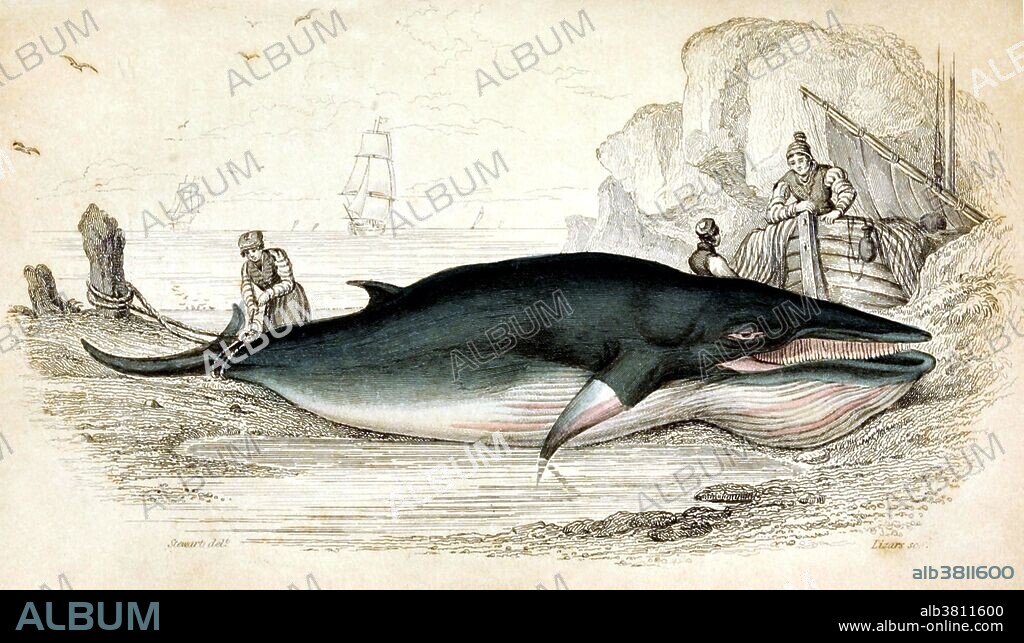alb3811600
Whaling, Minke Whale, 19th Century

|
Add to another lightbox |
|
Add to another lightbox |



Title:
Whaling, Minke Whale, 19th Century
Caption:
Lesser Rorqual. Minke whale or lesser rorqual, is a name given to two species of marine mammal belonging to a clade within the suborder of baleen whales. Whaling was mentioned in Norwegian written sources as early as the year 800, and hunting minke whales with harpoons was common in the 11th century. In the 19th century, they were considered too small to chase. By the end of the 1930s, they were the target of coastal whaling by Brazil, Canada, China, Greenland, Japan, Korea, Norway, and South Africa. Whaling is the hunting of whales primarily for meat and oil. Its earliest forms date to at least 3000 BC. Various coastal communities have long histories of subsistence whaling and harvesting beached whales. Industrial whaling emerged with organized fleets in the 17th century; competitive national whaling industries in the 18th and 19th centuries; and the introduction of factory ships along with the concept of whale harvesting in the first half of the 20th century. As technology increased and demand for the resources remained, catches far exceeded the sustainable limit for whale stocks. In the late 1930s, more than 50,000 whales were killed annually and by the middle of the century whale stocks were not being replenished. In 1986, the International Whaling Commission (IWC) banned commercial whaling so that stocks might recover. Whales by Robert Hamilton, 1843.
Credit:
Album / Science Source / Biodiversity Heritage Library
Releases:
Model: No - Property: No
Rights questions?
Rights questions?
Image size:
4131 x 2382 px | 28.2 MB
Print size:
35.0 x 20.2 cm | 13.8 x 7.9 in (300 dpi)
Keywords:
19TH CENTURY • ANIMAL • ANIMALIA • AQUATIC MAMMAL • ART • ARTWORK • BALAENA • BALAENIDAE • BALEEN WHALE • CETACEA • CETACEAN • CHORDATA • CHORDATE • DRAWING • EDENTULOUS WHALE • FISHERMEN • FLEET • HARPOON • HARPOONING • HISTORIC • HISTORICAL • HISTORY • HUNT • HUNTING • ILLUSTRATION • LESSER RORQUAL • MAMMAL • MAMMALIA • MAMMALIAN • MAMMALS • MAN-POWERED • MARINE MAMMAL • MARINE • MINKE WHALE • MYSTICETI • NAVY • OAR-POWERED • OCEAN DWELLING • OCEAN • OCEAN-DWELLING • RORQUAL • SEA CREATURE • SEA DWELLING • SEA MAMMAL • SEA • SEA-DWELLING • VERTEBRATA • VERTEBRATE • WHALE FISHERY • WHALE • WHALEBONE WHALE • WHALERS • WHALING BOATS • WHALING FLEET • WHALING SHIP • WHALING
 Pinterest
Pinterest Twitter
Twitter Facebook
Facebook Copy link
Copy link Email
Email

